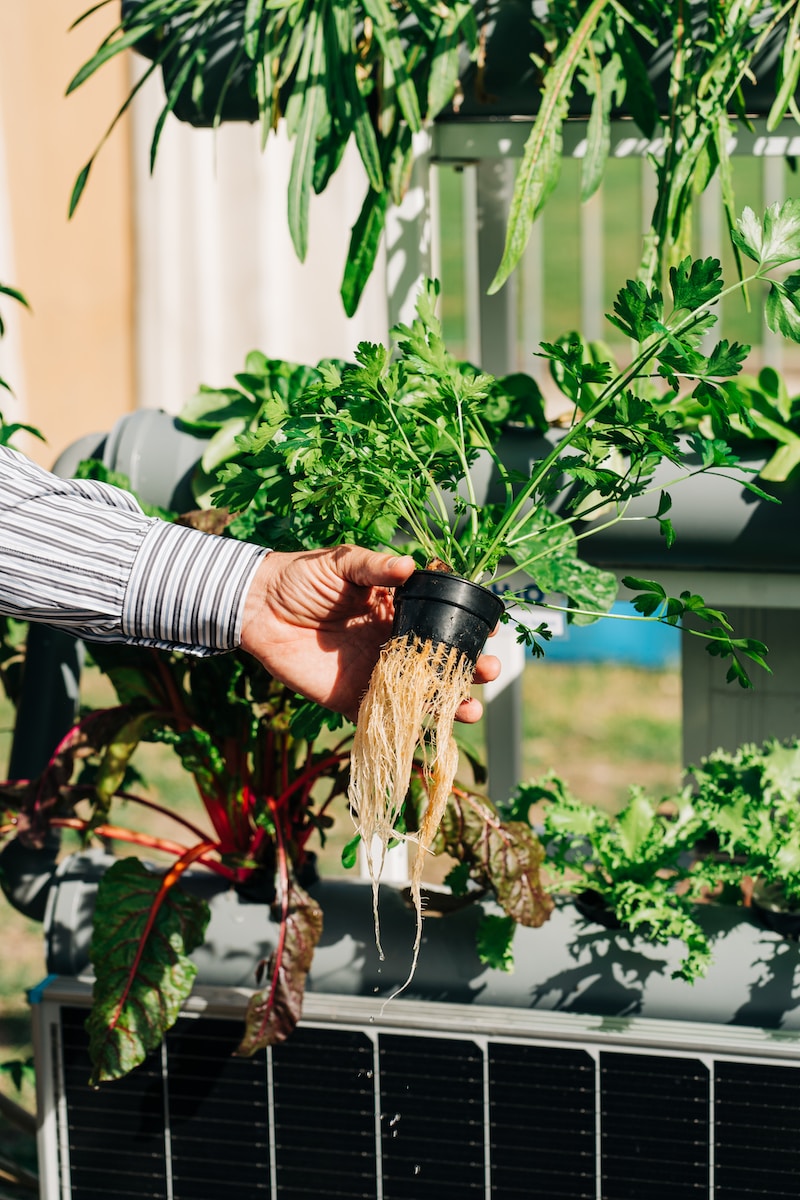Necessary Equipment for NFT Hydroponic Gardening
Starting your journey into NFT hydroponic gardening can seem daunting at first glance. But trust me, once you have all the necessary equipment at your fingertips, it’s a breeze. Here’s a handy checklist that should help you get started:
- NFT channels: This is where your plants will be and it’s typically slightly angled to facilitate nutrient flow. These can be purpose-built products, or basic PVC pipe, preferably square or rectangle shape.
- Nutrient solution reservoir (tank): Stores the water-nutrient mix for feeding your plants. Ensures they get exactly what they need. Depending on the size of the system, this needs to be from 30 to 100 liters.
- Submersible pump: This is used to pump nutrient solution from the reservoir to your grow tray. Check the pump can pump the required height. Most small fountain or water feature pumps will work.
- Grow media: Although NFT is a soil-less hydroponic method, a small amount of growing medium is required to support the plants, such as perlite.
- Net pots: These hold your plant in the nutrient solution. Check the size of them fits the wholes in the channels.
- Nutrients: Your plants will need specially formulated hydroponic nutrients to grow.
- TDS Meter: A crucial tool for hydroponics, a Total Dissolved Solids (TDS) meter measures the concentration of nutrients in your water, ensuring your plants receive the right amount for optimal growth.
- pH meter and adjusters: Since pH balance is critical in hydroponics, you’ll need these for monitoring and adjustments.
- Seeds or seedlings to grow in your system.
Plants Suitable for NFT Hydroponic Gardening
Now that we have our gear ready, let’s talk about what we’re going to grow. The beauty of NFT hydroponic gardening is that you can virtually grow anything, from vegetables, fruits to herbs. Let’s have a look at some of them:
- Vegetables such as lettuce, spinach, cucumbers, peppers, and tomatoes grow very well in NFT systems.
- Fruits like strawberries and even dwarf varieties of melons can be successfully cultivated.
- For herbs, options include basil, chives, parsley, mint, cilantro, and dill.
Speaking of herbs, they’re a great place to start. Fast-growing, versatile in dishes and oh-so fragrant. Need some inspiration? Here are the top ten herbs best grown hydroponically.
Tips and Techniques for Successful NFT Hydroponic Gardening
All geared up and plants chosen, let’s move onto succeeding in our gardening. Here’s some advice I’ve picked up along the way:
- Follow the recommended nutrient application for your specific plants. Over- or under- nutrient solution can stress or even kill your plants.
- Maintain proper pH levels. Ideal pH levels for most hydroponic crops fall in the range of 5.5 to 6.5.
- Provide adequate lighting. Most plants need at least 6-8 hours of light per day.
- Regularly clean your system to prevent build-up of micro-organisms and diseases.
If you’re more of a visual learner or want to get more in-depth, plenty of informative videos like this one can help you cheat your way through the process.
Troubleshooting Common Problems in NFT Hydroponic Gardening
Alright, so you’ve got everything up and running but you’ve encountered some issues. Not to worry! Here are some common problems to look out for and how to address them:
- If your plants show signs of wilting or yellowing, there might be an issue with the nutrient concentration. Check your nutrient mix and the pH level.
- Stunted or slow growth can be a result of insufficient lighting, so you might need to adjust your lights.
- Brown algae or a slimy residue on your plants could be a sign of a lack of oxygen in your water. An air stone can help to rectify this.
These are just some of the problems you might face, but the beautiful part of this journey is learning and growing, literally and figuratively. There’s always a wealth of resources out there to assist you in troubleshooting your concerns.
In summary, NFT hydroponics is a rewarding endeavour that requires a bit of practice and learning. With the right equipment, suitable plant choice, proper techniques, and ability to troubleshoot any arising issues, any nature enthusiast can master this gardening method.

